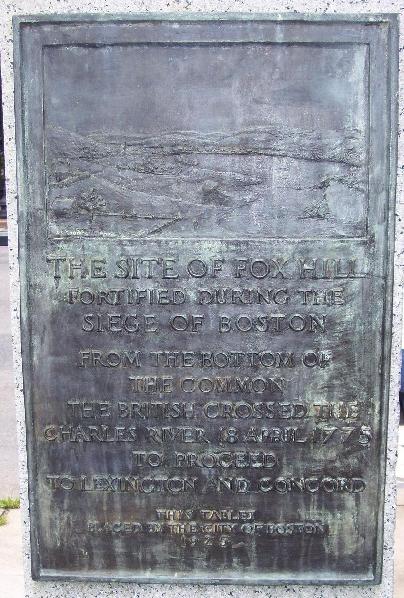| Site 1: The Boston Commons |
The Common was the
grazing land of the first inhabitant of Boston – William Blackstone.
When the Puritans arrived, and he decided to leave, and sold the land to
them. During the time of royal rule, the
Common was used as a military encampment, training ground, and armory.
1a. The Armory (possibly on Flagstaff Hill –
formerly known as Powder House Hill). A
gun house on the common stored two brass field cannons belonging to the Boston
Artillery Company. The commanding
officer planned to turn the cannons over to General Gage. However, on September 16, 1774, during the changing of the guard, rebellious members of
the Company broke in and removed the cannons.
When the sergeant discovered the theft he said, “I’ll be damned if these
people won’t steal the teeth out of your head while you’re on guard!” The cannons were taken to Concord and hidden at Major Barrett’s farm.
| |
 |
| The site of Fox Hill fortified during the siege of Boston From the bottom of the Common the British crossed teh Charles river, 18 April, 1775 to proceed to Lexington and Concord |
|
|
| 1b. The Embarkation Plaque (on the concrete
pillars marking the exit to the Public Garden on Charles
Street). In
1775, the foot of the commons was a marshland.
This was the perfect place to secretly ferry soldiers across the river
to Lechmere Point in the middle of the night for the (planned) secret raid to Concord. Colonel Francis Smith of the 10th
Regiment of Foot and Major Pitcairn of the Royal Marines led the troops
|
1c. Central Burying Ground (corner of Charles Street and Boylston
Street). Soldiers dying in Boston were buried here in a trench along one wall. After the battle on Breed’s Hill, field hospitals were set up in the adjoining houses to
minister to the numerous wounded soldiers.
| |
|